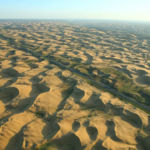Putting clay walls – quite a laborious lesson. So far, we have preserved many houses where most surfaces are finished with clay. Over time, she begins to crack, crumble, and all this hopelessly spoils the interior. Let’s figure out how to win this misfortune.
Clay properties
Demonstration of facades of houses made of clay
First, let’s talk what clay is and what positive and negative characteristics are in general.
It is known that clay for centuries was used as finishing material not only for the interior, but also for the design of external walls. And this is not surprising, because in areas with the presence of clay deposits of another way out there was not especially.
The main advantages of clay:
Hypoallergenicity. The material does not contain harmful substances, and it “works” as a filter, absorbing excessive moisture along with impurities that are in the air.
Safe utilization. If you belong to ardent nature defenders, then you will like the fact that excess clay can be disposed of without harm to the environment.
Multiple use. Clay can be used again, and after any amount of time.
Environmental friendliness. As you know, the walls are finished with clay using a grid from a fight. So, the tree does not need to be treated with poisonous impregnations, since the clay itself is a preservative and, enveloping your fight, prevents its decay and decomposition.
It is worth noting that clay is a very cheap building material.
From the shortcomings, it can be noted that not every master will take up the wall decoration of clay simply because now there are very few specialists familiar with this technology. Almost everyone can sew the surface with drywall, but clay is considered a kind of exotic. If you use clay for exterior decoration, every year you will need to do cosmetic repairs. The material gets wet very quickly and dries just as quickly. As a result, cracks appear on the surface, which require the sealing.
Clay putty – prepare the base
The video shows the process of plaster clay walls
Putting on clay is quite difficult. First you need, as in any work of this kind, to prepare an existing foundation. Check the surface for lagging areas. They will need to be repulsed and re -tucked up. You can do this with the same clay (as you remember, this material can be used many times). The main thing is to choose a high -quality primer that is ideal for clay. For clay, this composition will be impregnated "Primer".
You can soak the base with water, and with a fairly wide spatula to remove the most protruding bumps. By this you will greatly simplify your further work and save putty. If the finish does not disappear, then it will be enough only to draw cracks and slightly jam them with the same clay.
Putting clay walls – the process from a to me
First of all, the prepared surface should be primed. Do not forget that clay is a very absorbing material, so do not regret the primers and walk on the walls a couple of times. Clay and putty are materials that are different in composition and properties. In order not to subsequently regret the deed and not redo everything again, pull the grid over the entire surface of the wall. It can be fixed on the basis of it using a construction stapler. And even after that, you cannot put on clay the starting putty with a thick layer. We need the material to dry as quickly as possible and do not have time to give the wall a large amount of its moisture.
Putting on the start is used when there are significant disadvantages on the walls. If you prepared the surface with a clay mixture and stretched out the grid well, then you can immediately start working with finish putty (and yet this option is more suitable for experienced craftsmen). The thickness of the layer should also not be too large. In addition, if one application is not enough, the surface must be fucked, treated with soil, and only after that apply the next layer.
After the surface is ready, the walls can be covered with wallpaper, covered with structural plaster or simply painted with any water -based paint.





